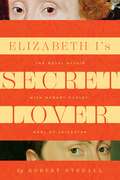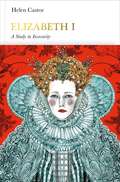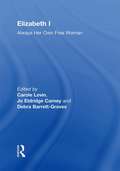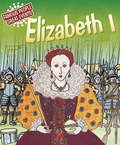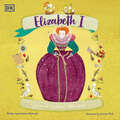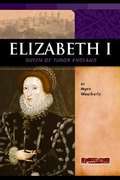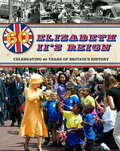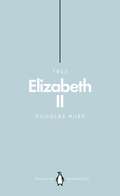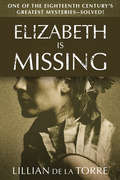- Table View
- List View
Elizabeth I's Final Years: Her Favourites & Her Fighting Men
by Robert StedallElizabeth I's Final Years outlines the interwoven relationships and rivalries between politicians and courtiers surrounding England’s omnipotent queen in the years following the death in 1588 of the Earl of Leicester. Elizabeth now surrounded herself with magnetically attractive younger men with the courtly graces to provide her with what Alison Weir has called ‘an eroticised political relationship’. With these ‘favourites’ holding sway at court, they saw personal bravery in the tiltyard or on military exploits as their means to political authority. They failed to appreciate that the parsimonious queen would always resist military aggression and resolutely backed her meticulously cautious advisors, William Cecil, Lord Burghley, and later his son Robert. With its access to New World treasure, it was Spain who threatened the fragile balance of power in Continental Europe. With English military intervention becoming inevitable, the Cecils diverted the likes of Walter Raleigh and the Earl of Essex, despite their lack of military experience, away from the limelight at court into colonial and military expeditions, leaving them just short of the resources needed for success. The favourites’ promotions caused friction when seasoned soldiers, like Sir Francis Vere with his unparalleled military record in the Low Countries, were left in subordinate roles. When Spanish support for rebellion in Ireland threatened English security, Robert Cecil encouraged Elizabeth to send Essex, knowing that high command was beyond his capabilities. Essex retorted by rebelling against Cecil’s government, for which he lost his head. Both Elizabeth and Cecil realised that only the bookish Lord Mountjoy, another favourite, had the military acumen to resolve the Irish crisis, but his mistress, Essex’s sister, the incomparable Penelope Rich, was mired by involvement in her brother’s conspiracy. Despite this, Cecil gave Mountjoy unstinting support, biding his time to tarnish his name with James I, as he did against Raleigh and his other political foes.
Elizabeth I's Last Favourite: Robert Devereux, 2nd Earl of Essex
by Sarah-Beth WatkinsDespite widespread interest in Robert Devereux, 2nd Earl of Essex, little has been written about him in decades past. In Elizabeth I's Last Favourite, Sarah-Beth Watkins brings the story of his life, and death, back into the public eye. In the later years of Elizabeth I's reign, Robert Devereux became the ageing queen's last favourite. The young upstart courtier was the stepson of her most famous love, Robert Dudley, Earl of Leicester. Although he tried, throughout his life, to live up to his stepfather's memory, Essex would never be the man he was. His love for the queen ran in tandem with undercurrents of selfishness and greed. Yet, Elizabeth showered him with affection, gifts and the tolerance only a mother could have for an errant son. In return, for a time, Essex flattered her and pandered to her every whim. But, one disastrous commission after another befell the earl, from his military campaigns, to voyages seeking treasure, to his stint as spymaster. Ultimately, his relationship with the queen would suffer and his final act of rebellion would force Elizabeth I to ensure her last favourite troubled her no more.
Elizabeth I's Secret Lover: Robert Dudley, Earl of Leicester
by Robert StedallThis biography details how one man rose to prominence in the Elizabethan court and become the queen’s favorite in more ways than one.Elizabeth I’s Secret Lover details just how Lord Robert Dudley become one of the most influential figures of his time. As a great impresario, he showed Elizabeth I off to her people to glittering effect and became the forerunner of Shakespearian theatre, combining classicism with ribaldry. He attracted the financing of Drake’s circumnavigation. He was the supporter of academic endeavor, of poetry, and of Puritan scholarship. By employing a network of his own agents, he provided information of crucial importance to Government. He built some of the finest houses and gardens of the age. As Master of the Horse, he developed English bloodstock to provide horses for Royal and military requirements. He even saw to it that England’s navy and army was properly prepared to meet Continental aggression when needed.Dudley also has faced criticism from historians by competing with William Cecil to gain the ear of Elizabeth I and thwarting his efforts to arrange a political marriage for her to protect against Continental Catholic aggression. There can be no doubt that Elizabeth wanted to marry him. He was devastatingly attractive, athletic, and loyal, and, as this book shows, there is compelling evidence that the “virgin queen” spent time in bed with him.“A well-researched account of their complicated relationship. If you finished Hilary Mantel’s The Mirror and the Light and are wondering what happened next to the blood-drenched Tudor clan, this could be the book for you.” —Mary Ann Gwinn, Minneapolis Star Tribune
Elizabeth I's Secret Lover: The Royal Affair with Robert Dudley, Earl of Leicester
by Robert StedallThis eloquent biography of the most influential nobleman of the Elizabethan Age reveals how Robert Dudley brilliantly captivated the court of Elizabeth I—and the heart of a queen.In many respects Lord Robert Dudley, Earl of Leicester, was the most significant statesman of the Elizabethan Age, ranking only behind the queen herself in precedence. As a great impresario, he honored Elizabeth I to glittering effect and became the forerunner of Shakespearean theater, combining classicism with ribaldry. He attracted the financing of Francis Drake&’s circumnavigation. He was the supporter of academic endeavor, of poetry, and of Puritan scholarship. By employing a network of his own secret agents, he provided information of crucial importance to the crown. As Master of the Horse, he developed English bloodstock to provide horses for royal and military requirements. He saw to it that England&’s navy and army was properly prepared to meet Continental aggression when needed. Lord Robert Dudley has faced criticism from historians by competing with William Cecil to gain the ear of Elizabeth I and thwarting his efforts to arrange a political marriage for her to protect against Catholic aggression from Spain. There can be no doubt that Elizabeth wanted to marry him. He was devastatingly attractive, athletic, and loyal. Perhaps most compelling to readers who enjoy royal scandal, this eloquent new book provides compelling evidence that the virgin queen spent time in her bed with him.
Elizabeth I, the People's Queen: Her Life and Times, 21 Activities
by Kerrie HollihanOne of England's most fascinating monarchs is brought to life in this hands-on study for young minds. Combining projects, pictures, and sidebars with an authoritative biography, children will develop an understanding of the Reformation, Shakespearean England, and how Elizabeth's 45-year reign set the stage for the English Renaissance and marshaled her country into a chief military power. Providing 21 activities, from singing a madrigal and growing a knot garden to creating a period costume--complete with a neck ruff and a cloak for the queen's court--readers will experience a sliver of life in the Elizabethan age. For those who wish to delve deeper, a time line, online resources, and a reading list are included to aid in further study.
Elizabeth I: A Study In Insecurity
by Helen CastorPart of the Penguin Monarchs series: short, fresh, expert accounts of England's rulers in a collectible format In the popular imagination, as in her portraits, Elizabeth I is the image of monarchical power. The Virgin Queen ruled over a Golden Age: the Spanish Armada was defeated; English explorers reached the ends of the earth; a new Church of England rose from the ashes of past conflict; the English Renaissance bloomed in the genius of Shakespeare, Spenser and Sidney. But the image is also armour. In this illuminating new account of Elizabeth's reign, Helen Castor shows how England's iconic queen was shaped by profound and enduring insecurity-an insecurity which was both a matter of practical political reality and personal psychology. From her precarious upbringing at the whim of a brutal, capricious father and her perilous accession after his death, to the religious division that marred her state and the failure to marry that threatened her line, Elizabeth lived under constant threat. But, facing down her enemies with a compellingly inscrutable public persona, the last and greatest of the Tudor monarchs would become a timeless, fearless queen.
Elizabeth I: A Study in Insecurity (Penguin Monarchs)
by Helen Castor'The experience of insecurity, it turned out, would shape one of the most remarkable monarchs in England's history' In the popular imagination, as in her portraits, Elizabeth I is the image of monarchical power. But this image is as much armour as a reflection of the truth. In this illuminating account of England's iconic queen, Helen Castor reveals her reign as shaped by a profound and enduring insecurity that was a matter of both practical politics and personal psychology.
Elizabeth I: A Study in Power and Intellect
by Paul JohnsonWell written with scholarly references. Style will appeal to the historian and less scholarly readers.
Elizabeth I: Always Her Own Free Woman (New Cultural Studies)
by Carole Levin Jo Eldridge CarneyThis interdisciplinary collection by historians, cultural critics and literary scholars examines a variety of the political, social, and cultural forces at work during the English Renaissance and beyond, forces that contributed to creating a wealth of artistic, literary and historical impressions of Elizabeth, her court, and the time period named after her, the Elizabethan age. Articles in the collection discuss Elizabeths' relationships, investigate the advice given her, explore connections between her court and the arts, and consider the role of Elizabeth's court in the political life of the nation. Some of the ways Elizabeth was understood and represented demonstrate society's fears and ambivalence about early modern women in power, while others celebrate her successes as England's first and only unmarried queen regnant. This volume will be of interest to scholars and students in a wide range of disciplines, including literary, cultural, historical and women's studies, as well as those interested in the life and times of Elizabeth I.
Elizabeth I: Collected Works
by Leah S. Marcus, Janel Mueller, and Mary Beth RoseThis long-awaited and masterfully edited volume contains nearly all of the writings of Queen Elizabeth I: the clumsy letters of childhood, the early speeches of a fledgling queen, and the prayers and poetry of the monarch's later years. The first collection of its kind, Elizabeth I reveals brilliance on two counts: that of the Queen, a dazzling writer and a leading intellect of the English Renaissance, and that of the editors, whose copious annotations make the book not only essential to scholars but accessible to general readers as well. "This collection shines a light onto the character and experience of one of the most interesting of monarchs. . . . We are likely never to get a closer or clearer look at her. An intriguing and intense portrait of a woman who figures so importantly in the birth of our modern world."—Publishers Weekly "An admirable scholarly edition of the queen's literary output. . . . This anthology will excite scholars of Elizabethan history, but there is something here for all of us who revel in the English language."—John Cooper, Washington Times "Substantial, scholarly, but accessible. . . . An invaluable work of reference."—Patrick Collinson, London Review of Books "In a single extraordinary volume . . . Marcus and her coeditors have collected the Virgin Queen's letters, speeches, poems and prayers. . . . An impressive, heavily footnoted volume."—Library Journal "This excellent anthology of [Elizabeth's] speeches, poems, prayers and letters demonstrates her virtuosity and afford the reader a penetrating insight into her 'wiles and understandings.'"—Anne Somerset, New Statesman "Here then is the only trustworthy collection of the various genres of Elizabeth's writings. . . . A fine edition which will be indispensable to all those interested in Elizabeth I and her reign."—Susan Doran, History "In the torrent of words about her, the queen's own words have been hard to find. . . . [This] volume is a major scholarly achievement that makes Elizabeth's mind much more accessible than before. . . . A veritable feast of material in different genres."—David Norbrook, The New Republic
Elizabeth I: Famous People, Famous Lives
by Harriet CastorExciting stories about famous people, outlining their lives and the important events which made them memorable. Every page features easy-to-follow text and a black-and-white line drawing to help bring these events to life. Each title gives further facts about the famous person and the times in which he or she lived, plus a comprehensive time line detailing key dates. When Elizabeth I becomes queen, she is determined to be a great Tudor queen - and do it on her own! She rules for almost 45 years, beats the Spanish Armada and wins the love of her people. Find out all about the life of Elizabeth I with this story that is packed with all the facts.
Elizabeth I: Famous People, Great Events
by Harriet CastorWhen Elizabeth I becomes queen, she is determined to be a great Tudor queen - and do it on her own! She rules for almost 45 years, beats the Spanish Armada and wins the love of her people. Find out all about the life of Elizabeth I with this story that is packed with all the facts and colourful pictures.This book is part of a series of picture books, Famous People, Great Events, which are suitable for ages 6-12. They tell the stories of famous men and women and great events in history and can be used to study the primary history curriculum. Written by successful authors, they are enjoyable reads which are packed with facts and colourful illustrations.
Elizabeth I: Queen of England 1558-1603 (History's Great Leaders )
by Jonathan MelmothExplore the history of the Tudor queen's 45-year reign in this children's biography, from the publisher of Queen Elizabeth: A Platinum Jubilee Celebration and King Charles III.The fourth book in this captivating series on British monarchs, Elizabeth I reveals the life and struggles of one of Britain's first queens. From defeating the Spanish Armada to encouraging the arts in the age of Shakespeare, Elizabeth's 45 year reign is thought to be one of the most glorious in British history.Bright, playful illustrations and simple, age-appropriate text ensure that this book is the perfect introduction to the last Tudor queen for little historians everywhere.
Elizabeth I: Queen of Tudor England
by Myra S. WeatherlyA biography profiling the life of Queen Elizabeth I, the queen of England during the peak of the Renaissance era. Includes source notes and timeline.
Elizabeth I: The Making of a Queen
by Laura BrennanA look at the people and events that shaped the life and reign of the last Tudor monarch. Elizabeth I is arguably one of the greatest monarchs and women of English history. Against an uncertain political and religious backdrop of post-reformation Europe, she ruled at the conception of social modernization, living in the shadow of the infamy of her parents&’ reputations and striving to prove herself an equal to the monarchs who had gone before her. This book seeks to explore some of the key events of her life both before and after she ascended to the English throne in late 1558. By looking at the history of these selected events, as well as investigating the influence of various people in her life, this book sets out to explain Elizabeth&’s decisions, both as a queen and as a woman. Among the events examined are the death of her mother; the role and fates of her subsequent stepmothers; the fate of Lady Jane Grey and the subsequent behavior and reign of her half sister Mary Tudor, along with the death of Amy Dudley, the return of Mary Queen of Scots to Scotland, the Papal Bull, and the Spanish Amanda.
Elizabeth I: The Making of a Queen
by Laura BrennanA look at the people and events that shaped the life and reign of the last Tudor monarch. Elizabeth I is arguably one of the greatest monarchs and women of English history. Against an uncertain political and religious backdrop of post-reformation Europe, she ruled at the conception of social modernization, living in the shadow of the infamy of her parents&’ reputations and striving to prove herself an equal to the monarchs who had gone before her. This book seeks to explore some of the key events of her life both before and after she ascended to the English throne in late 1558. By looking at the history of these selected events, as well as investigating the influence of various people in her life, this book sets out to explain Elizabeth&’s decisions, both as a queen and as a woman. Among the events examined are the death of her mother; the role and fates of her subsequent stepmothers; the fate of Lady Jane Grey and the subsequent behavior and reign of her half sister Mary Tudor, along with the death of Amy Dudley, the return of Mary Queen of Scots to Scotland, the Papal Bull, and the Spanish Amanda.
Elizabeth I: The Novel
by Margaret GeorgeThe New York Times bestseller from Margaret George--a captivating novel about history's most enthralling queen, the legendary Elizabeth Tudor.England's greatest monarch has baffled and intrigued the world for centuries. But what was the Virgin Queen really like? Lettice Knollys--Elizabeth's flame-haired, look-alike coussin--thinks she knows all too well. Elizabeth's rival for the love of Robert Dudley, Earl of Leicester, and mother to the Earl of Essex, the mercurial nobleman who challenged Elizabeth's throne, Lettice has been intertwined with Elizabeth since childhood. This is a story of two women of fierce intellect and desire, one trying to protect her country, and throne, the other trying to regain power and position for her family. Their rivalry, and its ensuing drama, soon involves everyone close to Elizabeth, from the famed courtiers who enriched the crown to the legendary poets and playwrights who paid homage to it with their works. Filled with intimate portraits of the personalities who made the Elizabethan age great--Shakespeare, Marlowe, Dudley, Raleigh, Drake--Elizabeth I provides an unforgettable glimpse of a woman who considered herself married to her people. A queen who ruled as much from the heart as from the head.From the Trade Paperback edition.
Elizabeth II's Reign - Celebrating 60 years of Britain's History
by Jacqui BaileyElizabeth II's Reign examines the recent history of Britain. Exploring the Britain the Queen was born into and took over when her reign began, the Commonwealth, changing social times / family, fashion, technology and work the book builds up a picture of how life in Britain has changed.The book is bought alive with humourous cartoon and by memories in the form of quotes from people who remember the events and changes from the past 60 years. It is illustrated with pictures of the Queen and the Royal family and historical photos of life in Britain.With panels of facts about the Queen and the Royal Family, this is a great read for children and young adults in the year of the Queen's Diamond Jubilee.Contents include:Sixty years on the throneThe end of the War (Rationing; marriages and births; a crumbling Empire; united for peace)A new Queen (King for a year; the Queen's father; coronation day; open to the public; good times...and bad)Family life (getting married; seen not heard; school days; pass or fail; all together; women's rights; all sorts of families; somewhere to live; instant houses; building blocks)Healthier and wealthier (paying the price; health for free; changing jobs; haves and have nots; the poverty line; going places; travelling by train; on the roads; it's good to talk; talking and walking, using computers)The way we live (a changing population; favourite food; super shops; well dressed; minis, bell-bottoms and safety pins; at the movies; what's on the box; from ballroom to the Beatles; festival time; by the seaside; packaged up)Looking aheadTimeline; further informationIndex
Elizabeth II's Reign - Celebrating 60 years of Britain's History
by Jacqui BaileyElizabeth II's Reign examines the recent history of Britain. Exploring the Britain the Queen was born into and took over when her reign began, the Commonwealth, changing social times / family, fashion, technology and work the book builds up a picture of how life in Britain has changed.The book is bought alive with humourous cartoon and by memories in the form of quotes from people who remember the events and changes from the past 60 years. It is illustrated with pictures of the Queen and the Royal family and historical photos of life in Britain.With panels of facts about the Queen and the Royal Family, this is a great read for children and young adults in the year of the Queen's Diamond Jubilee.Contents include:Sixty years on the throneThe end of the War (Rationing; marriages and births; a crumbling Empire; united for peace)A new Queen (King for a year; the Queen's father; coronation day; open to the public; good times...and bad)Family life (getting married; seen not heard; school days; pass or fail; all together; women's rights; all sorts of families; somewhere to live; instant houses; building blocks)Healthier and wealthier (paying the price; health for free; changing jobs; haves and have nots; the poverty line; going places; travelling by train; on the roads; it's good to talk; talking and walking, using computers)The way we live (a changing population; favourite food; super shops; well dressed; minis, bell-bottoms and safety pins; at the movies; what's on the box; from ballroom to the Beatles; festival time; by the seaside; packaged up)Looking aheadTimeline; further informationIndex
Elizabeth II: The Steadfast (Penguin Monarchs)
by Douglas HurdIn September 2015 Queen Elizabeth II becomes Britain's longest-reigning monarch. During her long lifetime Britain and the world have changed beyond recognition, yet throughout she has stood steadfast as a lasting emblem of stability, continuity and public service.Historian and senior politician Douglas Hurd has seen the Queen at close quarters, as Home Secretary and then on overseas expeditions as Foreign Secretary. Here he considers the life and role of Britain's most greatly admired monarch, who, inheriting a deep sense of duty from her father George VI, has weathered national and family crises, seen the end of an Empire and heard voices raised in favour of the break-up of the United Kingdom.Hurd creates an arresting portrait of a woman deeply conservative by nature yet possessing a ready acceptance of modern life and the awareness that, for things to stay the same, they must change.With a preface by HRH Prince William, Duke of Cambridge
Elizabeth Is Missing: One of the Eighteenth Century's Greatest Mysteries—Solved!
by Lillian de la TorreThe true story of the eighteenth-century English maidservant at the center of a fascinating criminal mystery. On New Year&’s Day, 1753, Elizabeth Canning disappeared. An eighteen-year-old girl, she was unremarkable in every respect, from her appearance to her disposition, but she was about to become the most famous person in London. When she reappeared one month later, starving and ill, she claimed she had been abducted and held captive by a woman named Susannah Wells, who wanted Elizabeth to work for her as a prostitute. Based on Elizabeth&’s testimony, Wells was arrested, tried, and convicted—but the case was just getting started. Convinced the young woman was lying, the Lord Mayor of London set out to uncover the truth. What followed was one of the most celebrated criminal cases of the era. The controversy, which threatened to tear London apart, revolved around one frightened, mysterious girl. Meticulously researched and irresistibly readable, Elizabeth Is Missing is the definitive account of one of the most unusual cases of the eighteenth century, a must-read for fans of historical true crime.
Elizabeth Jane Howard: A Dangerous Innocence
by Artemis CooperElizabeth Jane Howard (1923-2014) wrote brilliant novels about what love can do to people, but in her own life the lasting relationship she sought so ardently always eluded her. She grew up yearning to be an actress; but when that ambition was thwarted by marriage and the war, she turned to fiction. Her first novel, The Beautiful Visit, won the John Llewellyn Rhys prize - she went on to write fourteen more, of which the best-loved were the five volumes of TheCazalet Chronicle. Following her divorce from her first husband, the celebrated naturalist Peter Scott, Jane embarked on a string of high-profile affairs with Cecil Day-Lewis, Arthur Koestler and Laurie Lee, which turned her into a literary femme fatale. Yet the image of a sophisticated woman hid a romantic innocence which clouded her emotional judgement. She was nearing the end of a disastrous second marriage when she met Kingsley Amis, and for a few years they were a brilliant and glamorous couple - until that marriage too disintegrated. She settled in Suffolk where she wrote and entertained friends, but her turbulent love life was not over yet. In her early seventies Jane fell for a conman. His unmasking was the final disillusion, and inspired one of her most powerful novels, Falling.Artemis Cooper interviewed Jane several times in Suffolk. She also talked extensively to her family, friends and contemporaries, and had access to all her papers. Her biography explores a woman trying to make sense of her life through her writing, as well as illuminating the literary world in which she lived.
Elizabeth Jane Howard: A Dangerous Innocence
by Artemis CooperElizabeth Jane Howard (1923-2014) wrote brilliant novels about what love can do to people, but in her own life the lasting relationship she sought so ardently always eluded her. She grew up yearning to be an actress; but when that ambition was thwarted by marriage and the war, she turned to fiction. Her first novel, The Beautiful Visit, won the John Llewellyn Rhys prize - she went on to write fourteen more, of which the best-loved were the five volumes of The Cazalet Chronicle. Following her divorce from her first husband, the celebrated naturalist Peter Scott, Jane embarked on a string of high-profile affairs with Cecil Day-Lewis, Arthur Koestler and Laurie Lee, which turned her into a literary femme fatale. Yet the image of a sophisticated woman hid a romantic innocence which clouded her emotional judgement. She was nearing the end of a disastrous second marriage when she met Kingsley Amis, and for a few years they were a brilliant and glamorous couple - until that marriage too disintegrated. She settled in Suffolk where she wrote and entertained friends, but her turbulent love life was not over yet. In her early seventies Jane fell for a conman. His unmasking was the final disillusion, and inspired one of her most powerful novels, Falling.Artemis Cooper interviewed Jane several times in Suffolk. She also talked extensively to her family, friends and contemporaries, and had access to all her papers. Her biography explores a woman trying to make sense of her life through her writing, as well as illuminating the literary world in which she lived.
Elizabeth Jane Howard: A Dangerous Innocence
by Artemis CooperElizabeth Jane Howard (1923-2014) wrote brilliant novels about what love can do to people, but in her own life the lasting relationship she sought so ardently always eluded her. She grew up yearning to be an actress; but when that ambition was thwarted by marriage and the war, she turned to fiction. Her first novel, The Beautiful Visit, won the John Llewellyn Rhys prize - she went on to write fourteen more, of which the best-loved were the five volumes of The Cazalet Chronicle. Following her divorce from her first husband, the celebrated naturalist Peter Scott, Jane embarked on a string of high-profile affairs with Cecil Day-Lewis, Arthur Koestler and Laurie Lee, which turned her into a literary femme fatale. Yet the image of a sophisticated woman hid a romantic innocence which clouded her emotional judgement. She was nearing the end of a disastrous second marriage when she met Kingsley Amis, and for a few years they were a brilliant and glamorous couple - until that marriage too disintegrated. She settled in Suffolk where she wrote and entertained friends, but her turbulent love life was not over yet. In her early seventies Jane fell for a conman. His unmasking was the final disillusion, and inspired one of her most powerful novels, Falling.Artemis Cooper interviewed Jane several times in Suffolk. She also talked extensively to her family, friends and contemporaries, and had access to all her papers. Her biography explores a woman trying to make sense of her life through her writing, as well as illuminating the literary world in which she lived.(P)2016 John Murray Press



